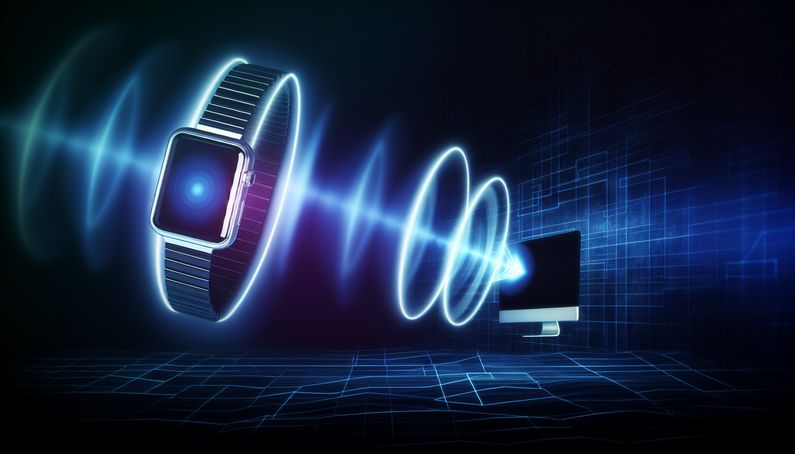
SmartAttack: How Smartwatches Are Changing the Game in Cybersecurity
SmartAttack represents a groundbreaking approach to data exfiltration, exploiting the ubiquity and technological capabilities of smartwatches to breach air-gapped systems. These systems, typically isolated from external networks to enhance security, are now vulnerable to this innovative attack vector. By using malware to convert a computer’s speaker into an ultrasonic transmitter, sensitive data can be covertly sent to a smartwatch, which acts as a receiver. This method not only challenges the perceived security of air-gapped systems but also underscores the potential risks associated with everyday wearable technology (BleepingComputer).
SmartAttack: Leveraging Smartwatches for Data Exfiltration from Air-Gapped Systems
The Mechanics of SmartAttack
SmartAttack is a novel method that exploits smartwatches to exfiltrate data from air-gapped systems. Air-gapped systems are designed to be secure by physically isolating them from any external networks, making traditional cyber attacks challenging. However, SmartAttack circumvents this isolation by using smartwatches as covert ultrasonic signal receivers. The attack involves malware that infiltrates the air-gapped system, which then uses the computer’s built-in speaker to emit ultrasonic signals containing sensitive data. These signals are picked up by a nearby smartwatch, which acts as a receiver. This method highlights the vulnerability of air-gapped systems to unconventional attack vectors, despite their physical isolation (BleepingComputer).
The Role of Smartwatches in Data Exfiltration
Smartwatches are increasingly popular due to their multifunctionality, including tracking health metrics, receiving notifications, and more. However, their capability to receive ultrasonic signals makes them an ideal tool for data exfiltration in SmartAttack. The attack exploits the smartwatch’s ability to receive ultrasonic frequencies, which are inaudible to humans but can carry data. This method is particularly concerning because it leverages a device that is often considered benign and ubiquitous, making detection and prevention challenging (PMC).
Challenges in Detecting and Preventing SmartAttack
Detecting SmartAttack poses significant challenges due to its covert nature. The use of ultrasonic signals means that traditional network monitoring tools are ineffective, as these signals do not travel over conventional network channels. Moreover, the attack does not interfere with the normal operations of the air-gapped system, making it difficult to identify any anomalies. Preventing such attacks requires innovative countermeasures, such as deploying ultrasonic jamming devices or enhancing the security protocols of smartwatches to prevent unauthorized signal reception (ZDNet).
Comparative Analysis with Other Air-Gapped Data Exfiltration Techniques
While SmartAttack is a unique method of data exfiltration, it is part of a broader spectrum of techniques that exploit various physical emissions from air-gapped systems. Other methods include using RAM to emit Wi-Fi signals, manipulating fan vibrations, and exploiting power lines to transmit data. Each of these techniques, including SmartAttack, relies on the physical properties of computer components to bypass the air gap. This comparative analysis underscores the need for comprehensive security measures that address not only network-based threats but also those that exploit physical emissions (ZDNet).
Future Implications and Research Directions
The development of SmartAttack and similar techniques has significant implications for the future of cybersecurity, particularly in environments that rely on air-gapped systems for security. As attackers continue to devise innovative methods to bypass physical isolation, it is crucial for researchers and security professionals to stay ahead by developing new detection and prevention strategies. Future research could focus on enhancing the security of wearable devices, exploring the potential of machine learning algorithms to detect unusual patterns in ultrasonic frequencies, and developing more robust physical security measures for air-gapped systems (TheSecMaster).
Final Thoughts
The emergence of SmartAttack highlights the evolving landscape of cybersecurity threats, where even the most secure systems are not immune to innovative attack vectors. As smartwatches and other IoT devices become more integrated into daily life, their potential misuse in cyber attacks becomes a pressing concern. Addressing these vulnerabilities requires a multi-faceted approach, including enhancing the security of wearable devices and developing new detection methods for unconventional data exfiltration techniques. The cybersecurity community must remain vigilant and proactive in researching and implementing solutions to protect against such sophisticated threats (TheSecMaster).
References
- SmartAttack uses smartwatches to steal data from air-gapped systems, 2024, BleepingComputer source url
- The role of smartwatches in data exfiltration, 2024, PMC source url
- Academics turn RAM into WiFi cards to steal data from air-gapped systems, 2024, ZDNet source url
- Academics steal data from air-gapped systems using PC fan vibrations, 2024, ZDNet source url
- 14 popular air-gapped data exfiltration techniques used to steal the data, 2024, TheSecMaster source url)



